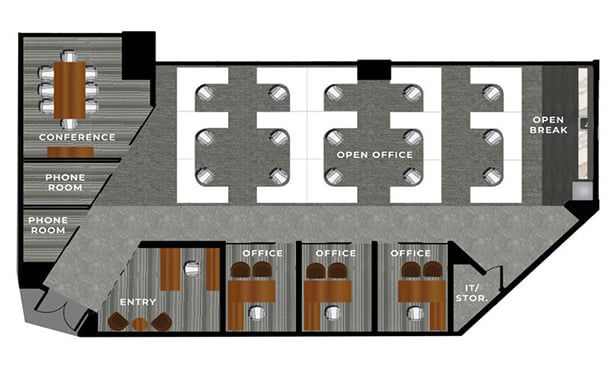WASHINGTON DC—The benefits from federal government's investment in transportation infrastructure ripple far beyond the construction sector, says a new study from IHS Inc. Commissioned by the Transportation Construction Coalition, headquartered here, the study also found that federal investment in highways and public transit returns 74 cents of tax revenue on the dollar.
The report comes as the coalition's members, including its co-chairs, the Associated General Contractors of America and the American Road & Transportation Builders Association, plan to lobby Congress for a more permanent base of support for the Highway Trust Fund, which is due to run out of funds by next May. The HTF has been in eleventh-hour jeopardy six times since 2008, and in an open letter to Congress this past summer, TCC's members wrote that “America's transportation infrastructure network requires a long-term federal commitment.”
IHS' report, prepared by senior consultant Karen Campbell and director Bob Brodesky, cites “far-reaching indirect benefits” from federal infrastructure spending. It says that every dollar of federal transportation investment returns between $1.80 and $2.00 of additional real goods and services produced in the economy. Current federal highway and public transit investment levels of about $50 billion annually generate an average $31 billion in personal income tax receipts per year and $6 billion in federal corporate tax receipts per year due to increased economic activity, according to the analysis.
“Federal transportation spending expands the capital stock of the U.S. economy, drives the production and delivery of goods and services, and positively affects business and household incomes,” Campbell and Brodesky write. “It also enhances the transportation system's operational capacity by reducing travel times and costs. This results in greater accessibility for individuals, households and businesses, more efficient delivery of goods and services, improved lifestyles and standards of living and safer roadways.”
Sixty-two percent of the jobs created from federal highway and mass transit investments are outside the construction industry, the study reports. “The sector that experiences the largest benefit, in terms of jobs created, is the business and professional services sector,” according to the IHS study. The trade, transportation and utilities sector, including wholesale and retail companies, runs a close second.
Current levels of federal spending on highway and mass transit, Campbell and Brodesky write, contribute “nearly 1% to the US production of goods and services. The current level of funding contributes on average 614,000 jobs per year over the 2014-2019 time period and adds an average of $410 to each US household's real income each year. A 5% increase in annual spending through 2019 would result in an average of 59,400 additional jobs per year and an annual average increase of $40 in real household income.”
Commenting on the report, Robert D. Stevens, president of the American Society for Civil Engineers, says it echoes what members of his profession have said for years: “If we fail to make the investment in our aging transportation infrastructure, our economy will suffer. Our transportation system is the backbone of the economy, and it drives growth in sectors beyond construction. Roads and transit received D grades and bridges received a C+ in the 2013 Report Card for America's Infrastructure. The low grades are holding our economy back. This report should serve as further incentive for our Congressional leaders to fix the Trust Fund.”
© Touchpoint Markets, All Rights Reserved. Request academic re-use from www.copyright.com. All other uses, submit a request to [email protected]. For more inforrmation visit Asset & Logo Licensing.







